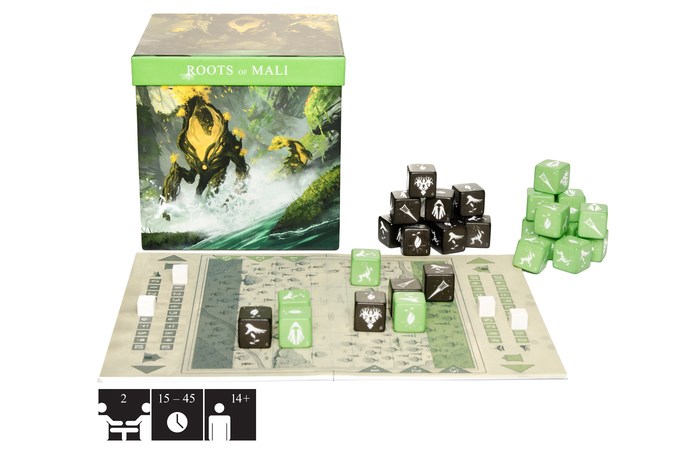While dice and I get along slightly less well than a wild dog and a feral cat, there is still something about the colourful cubes that catches my attention.
Like most gamers I have far more dice in drawers, boxes and bags that I ever need, although it’s a fair bet I will over time acquire more.
Of course that is the familiar numbered dice I am referring to, that rarely roll the number I need for whatever game I am playing.
I have seen my skaven gutterrunners sprawled across the Bloodbowl pitch when I merely needed to roll a two or better, and an ace ended up staring at me.
I’ve seen my giant robot in Monsterpolcalypse miss everything but air, when no hit dice showed even though I was rolling a fist full of dice.
And, so goes a long list of woeful dice tales.
There are times though dice ascend from mere tools of luck, mostly bad luck I repeat.
There are times dice become the pieces in a board game, the best of these with unique faces; think back to the days of Dragon Dice.
And, more recently of DiceWar, and in particular of the expansion Roots of Mali.
Roots of Mali, is a tactical combat game for abstract strategists that uses big chunky, awesome looking dice for pieces in a game that reminds greatly of chess or Terrace.
“Enter a fascinating fantasy world where ancient tribes are torn apart by internal strife,” states the game intro. “Fierce power struggles and cunning strategies lead to epic confrontations, deciding over total supremacy in the Warlands.”
So yes there is a backstory, but in the end each face of the six-sided dice has its own movement and/or ability and players move the pieces around a grid (again like chess) trying to achieve the win condition.
Each player has the same set of dice.
Roots of Mali is a standalone game and 100 percent compatible with all other editions, (such as Light of Dragons, Bond of Demons and Rise of Xeladron). Tribes from all games can be combined for new challenges and even greater
replayability. Each tribe consists of six different creatures with unique abilities and distinct power levels.
You win by defeating an opposing creature you gain victory points equal to the creature’s power level. So for example if the two face is showing and you capture that piece you get two VPs. The first player to collect 10 victory points wins.
“This is by tactically moving creatures and exercising their special powers to outwit your opponents, eliminating their character dice from the board, the Warlands,” notes the rulebook.
There are a couple of variants too.
With ‘The Camp’ at the beginning of the game each player places his Camp in the Supply Zone as he places creatures:
• If you move a creature in your own tent this creature die is put back into your reserve.
• If you move during the game a creature in your opponent’s tent you sacrifice the creature die instantly into your exile and your opponent has to put creature dice from the reserve into the exile equal to the power level of the creature you sacrificed.
With ‘The Ruins’ at the beginning of the game and before placing the creatures, the ruins are placed. If a player occupies all three Ruins with his own creatures of power level two or higher, he immediately wins the game. The game can still be won by reaching 10 VPs.
The variants are a real bonus to an already nifty game.
So too is the ability to mix and match the various expansions, adding much more to explore.
This will not be for all, but with a fairly modest learning curve, nice pieces, and easy to transport to play, it is well-worth a look at www.suncoregames.ch
Thanks to Adam Daniels for his help in playtesting.




